Steppe culture
CULTURES SKILLS
- Animal Healing
- Cookery
- Driving
- Fletching
- Horticulture
- Hunting
- Slings
- Trading
- Animal Handling
- Direction Sense
- Distance Running
- Foraging
- Herding
- Read Tracks
- Riding
- Tracking
Legend
“From the windswept plains come the swift riders, masters of the horse and the bow, wandering the endless grasslands with the seasons.”
Description
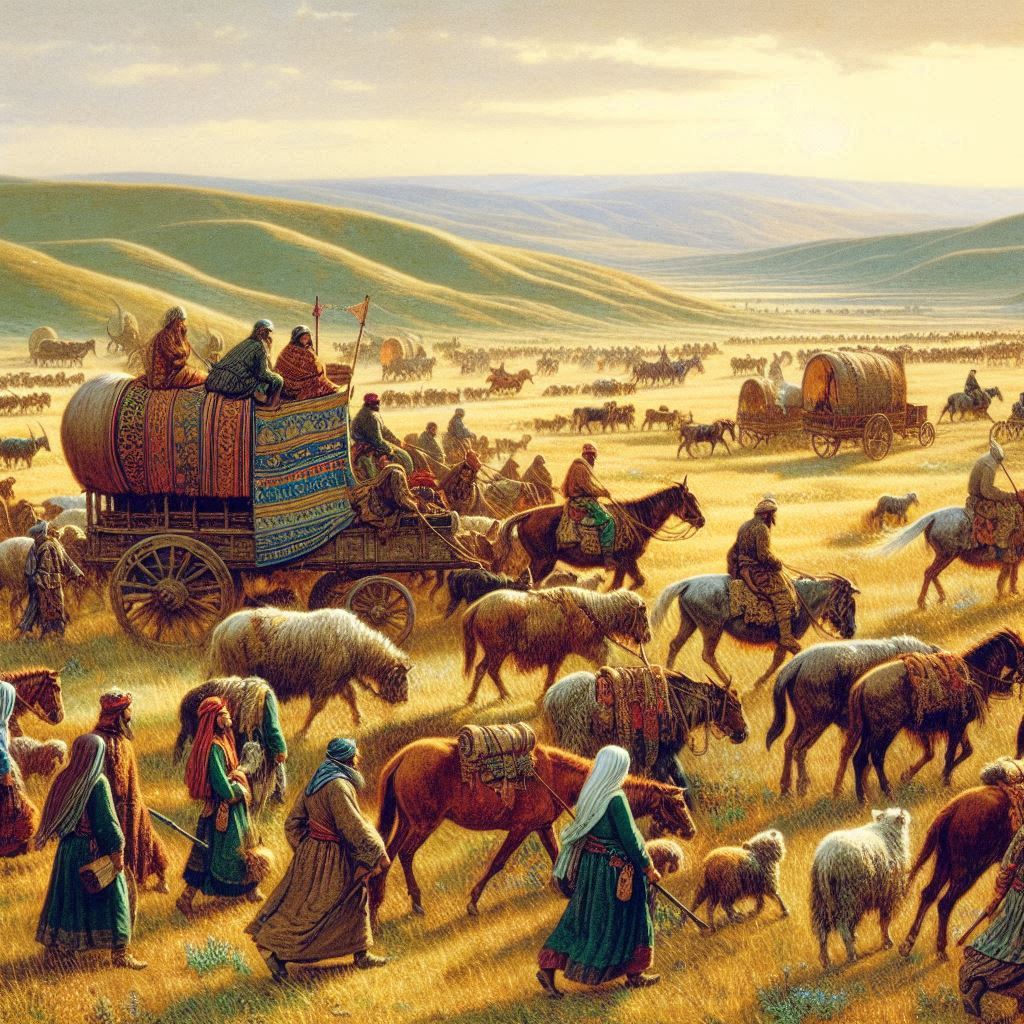
Steppe dwellers are nomadic or semi-nomadic people, adept at surviving in a vast, open landscape with limited water resources. They are renowned for their skills as horsemen and hunters, maintaining a deep connection to the land and its creatures.
Lifestyle: Constant travel in quest of new grazing areas for their herd. Strong focus on family groupings and extended kin networks. Hardened by the Elements: Resistance to adverse weather conditions, ranging from blistering summers to cold winters. Horses play an important role in their lives, serving as modes of transportation, hunting, and combat.
Diet: The diet of steppe nomads is heavily reliant on livestock, including meat, milk, and cheese. They also eat grains like millet and barley, often in the form of porridge or bread. Fermented dairy products are common, and they supplement their diet with game and foraged plants. Their diet is high in calories, necessary for their active, nomadic lifestyle.
Traditions and Stories: Oral storytelling involves passing on history, tales, and wisdom through spoken word. Ancestor worship honours departed family members as guardians or guides. Nature-based ceremonies that celebrate seasonal cycles and natural events. Shamanistic rituals hold the concept that spiritual mediators connect with the spirit realm.
Marriage Pattern: Marriages arranged through strategic alliances frequently strengthen tribal bonds. Early marriage ensures the tribe’s survival while also providing assistance for the young pair. The dowry or bride price reflects the importance put on women and their efforts.
Religion: They believe in spirits that inhabit natural elements and objects, as well as deities linked with the natural world, and seek advice from spiritual mediators.
- Religious system: Nature worship of the connection to the natural world, with deities representing elements or animals
- God-Mortal Interaction: Strong belief in the guidance of ancestors, especially those skilled in horsemanship and survival.
- Rituals: Ceremonies for successful hunts, horse races, and coming-of-age rites.
- Impact on Society: A nomadic lifestyle centred around horses, with a strong emphasis on bravery and skill. Religion reinforces the importance of family and community.
Skjald Kazumix
Craftsmanship: Making saddles, bridles, clothes, and containers from animal skins. Forging weapons, tools, and horse equipment. Weaving textiles with wool, felt, or other available fibres. Bone carving is the process of producing beautiful objects and tools out of animal bones.
Clothing & Decoration: Clothing intended to be both mobile and weather-resistant. Natural dyes use plants and minerals to colour garments and fabrics. Jewellery and embellishments made of bone, leather, and metal, sometimes having symbolic connotations. Tattoos and scarification serve as status or tribal connection indicators.
Armor: Leather provides protection from the weather and small hazards. Scales constructed of hardened leather or metal for further protection.Helmets and greaves are used to protect important regions during battle.
Weapons: The bow and arrow are the principal weapons for hunting and warfare. Sword and dagger for close combat. To capture prey or adversaries, use a lasso or bola. Quiver and Arrowheads: Essential equipment for the steppe warrior.
Special Items: Using trained birds for hunting and scouting.Knowledge of steppe flora’s therapeutic and medicinal properties.
Skjald Sejrik
Time: Steppe people follow and respect the seasonal cycles of the grasslands, including animal migration, grass growth, grazing patterns, and celestial events.
Accomplishment and achievement: The tribe’s prosperity, cohesiveness, raiding, and mobility all contribute to its success. In addition to individual riding, herding, hunting prowess, and tribal contribution.
Authority Interaction: Khanates or tribal councils exercise authority, emphasising allegiance to the steppe. The leaders tend to be accomplished military commanders or wise elders revered for their wisdom.
Fears & Inabilities: Fear of drought and water shortage is a frequent issue. Fear of losing herds: Loss of cattle may be terrible.Due to a strong attachment to the nomadic lifestyle, individuals are unable to adjust to sedentary living.
Mien: Culture has a medium influences demeanor, but individual personality is still evident.
Mannerism: Like grassland, but with a potentially more stoic, resilient demeanor.
Prejudices: Outsiders are viewed with suspicion, and individuals from other cultures are avoided.Sedentary individuals have contempt for stable civilisations, perceiving them as weak and defenceless.
Skjald El Mary
General Resistance: The nomadic lifestyle promotes strong physical health, allowing them to endure lengthy treks, severe temperatures, and physical activity. Constant exposure to various and harsh weather conditions, including intense heat and cold, wind, and dust, has polished their capacity to live and grow in a variety of adverse environments.
Disease Resistance: Moderate to High: Because of their active lives and exposure to a range of infections in the environment, steppe dwellers have evolved robust immune systems. However, their frequent migration protects them from long-term exposure to certain illnesses that may be endemic to a single location, therefore balancing their disease resistance.
Poison Resistance: Moderate: They have comprehensive knowledge of local plants, including which ones are dangerous and how to fight poisons. This understanding, together with the application of herbal treatments, results in a modest level of toxin resistance.
Remedies: Steppe cultures have a long history of employing herbal treatments drawn from the steppe’s varied flora. They employ these cures to treat a wide range of maladies, including wounds, infections, and poisons. In addition to herbs, they employ animal products like milk, fat, and bones in their healing techniques. These therapies might involve utilising mare’s milk to provide nourishment and immunity, as well as putting animal fat on wounds to promote healing.
Skjald Yell'a'Beard
History
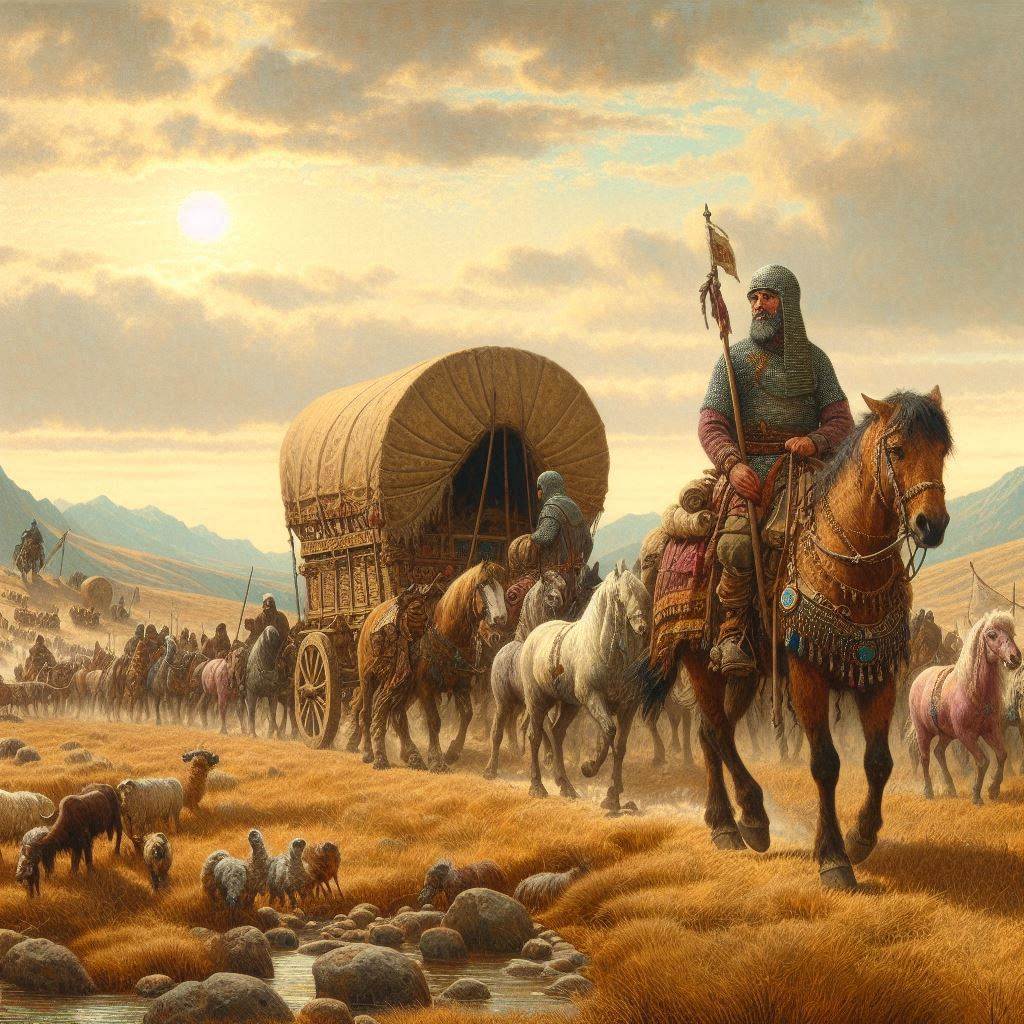
Steppe civilisations have a rich oral heritage, which includes stories about migrations, conflicts, and mythical heroes. They may have a history of struggle with adjacent civilisations over grazing pastures, which frequently results in epic tales of valour and survival.
Skjald Ulrich
Cartography
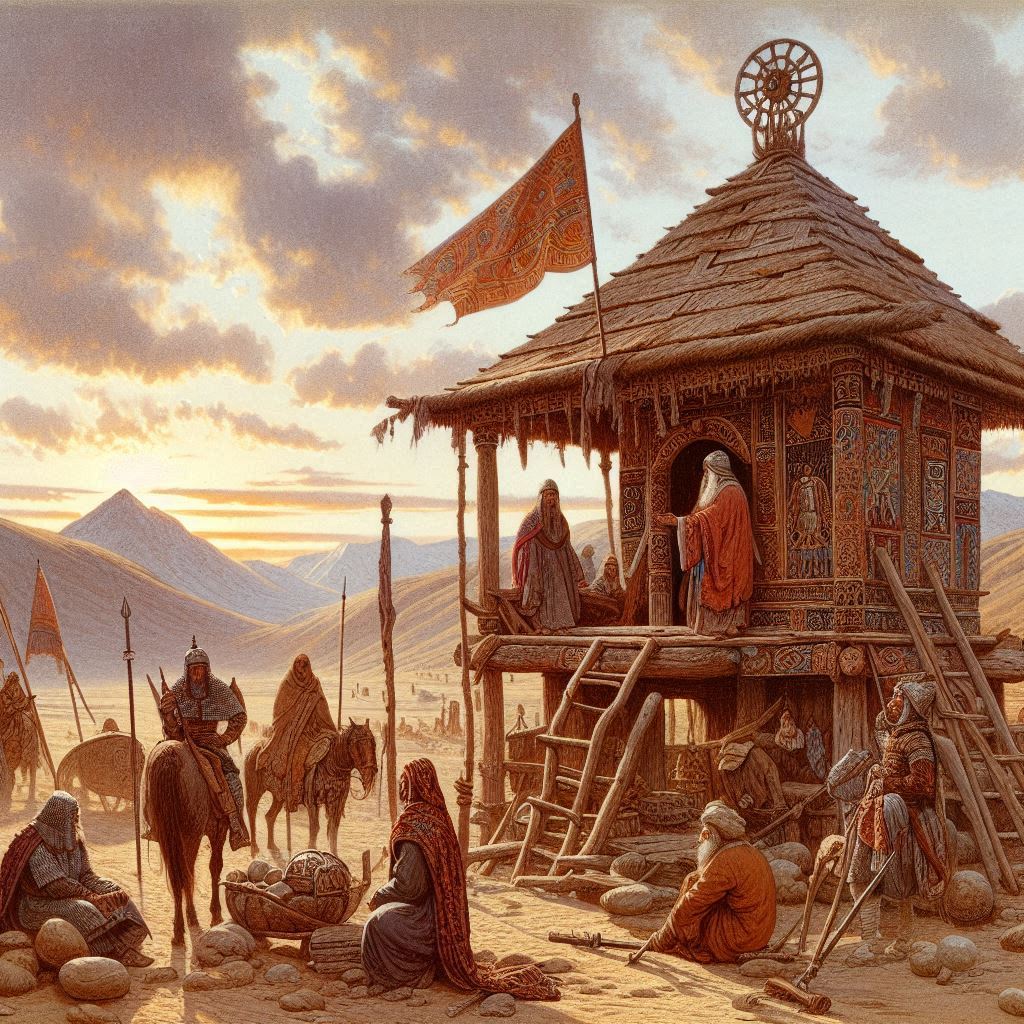
Natural landmarks, celestial sequences, and seasonal variations help steppe people traverse their vast regions. Their maps, typically scrawled in clay or carved into leather, represent the fluidity with which they travel over the environment.
Skjald Kazumix
Organisation
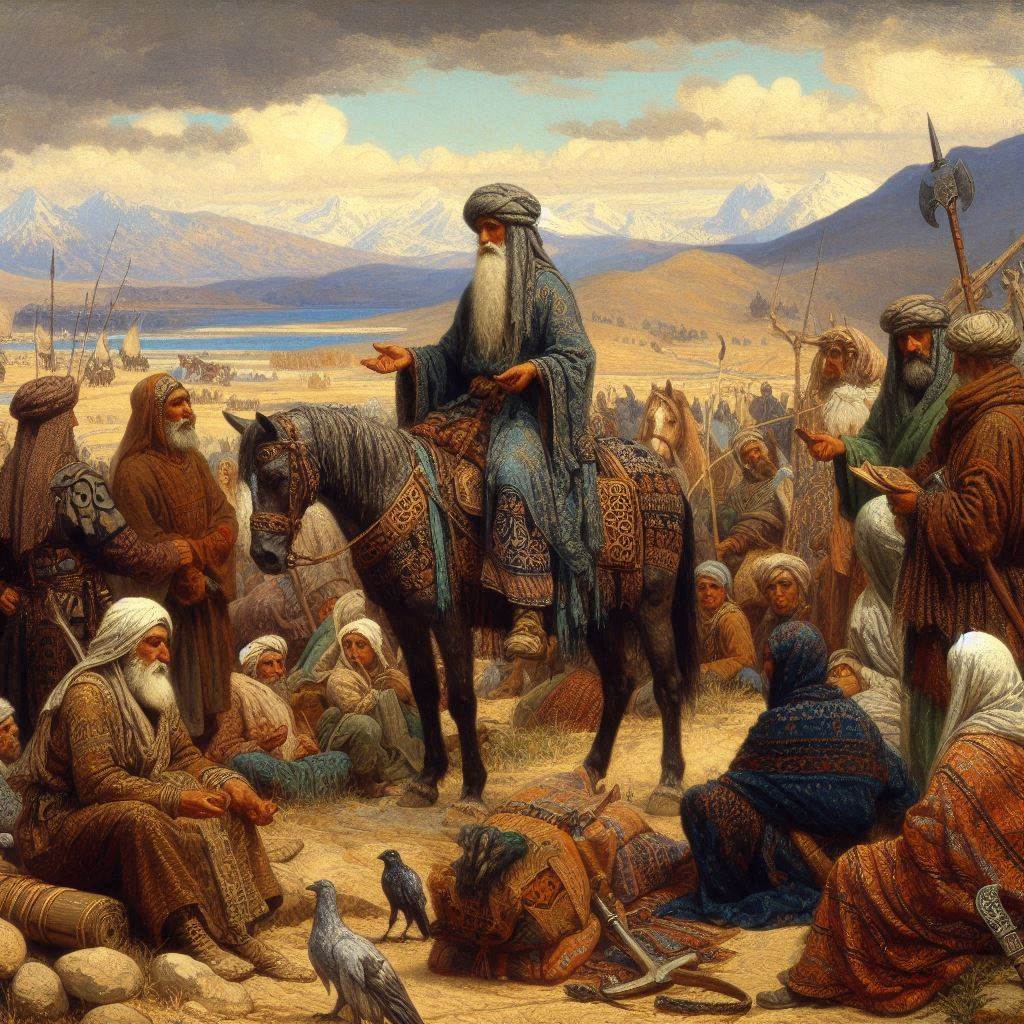
Steppe societies are generally tribal, with leaders chosen based on military strength or capacity to provide for the community. Kinship and loyalty are vital, with tribal councils or chiefs guiding the villages. Leadership shifts can be flexible, affected by the leaders’ achievements and failures in battle or migration.
Skjald El Mary
Special
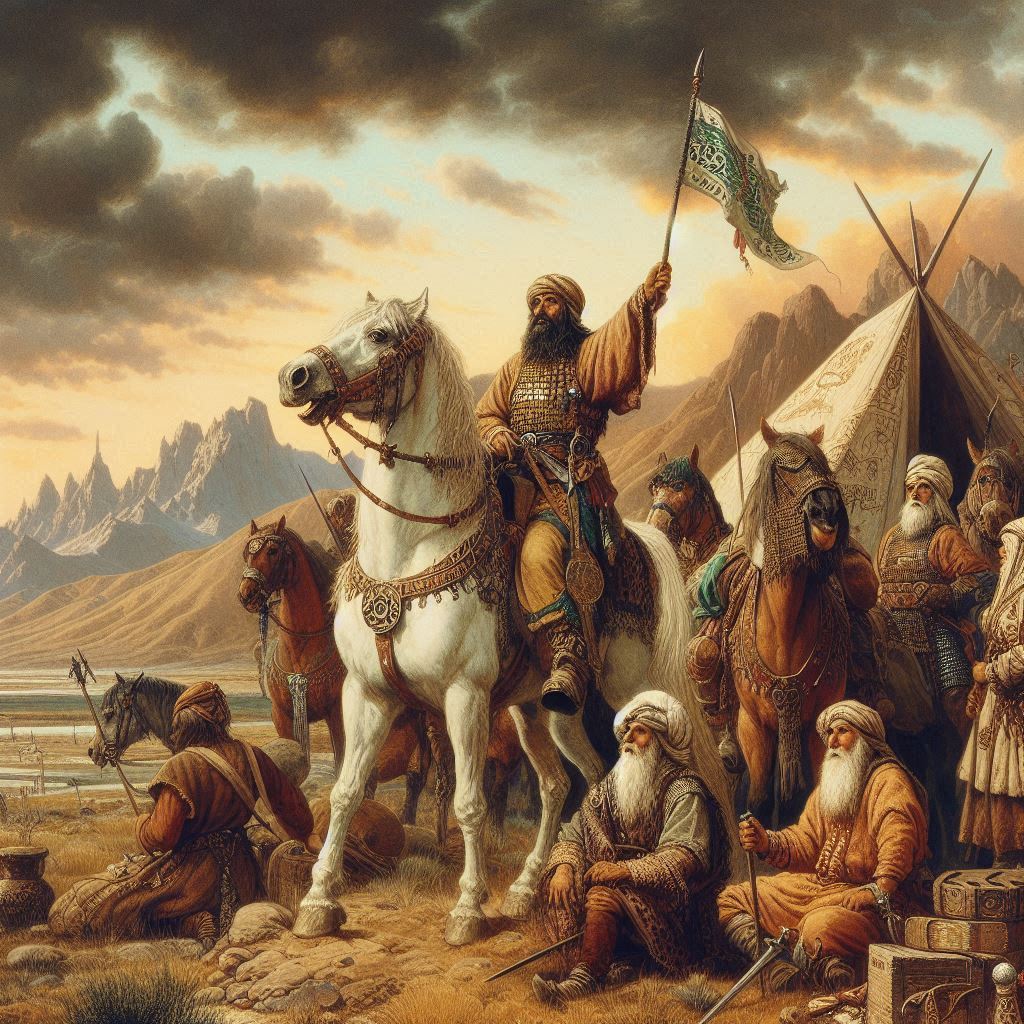
Steppe cultures thrive at riding and archery. They have extensive understanding of steppe flora and animals, as well as cutting-edge water conservation measures. Their survival abilities in the harsh steppe habitat make them tough and resourceful.
Skjald Sigurd
Last Updated on 2024-10-20 by IoM-Christian
